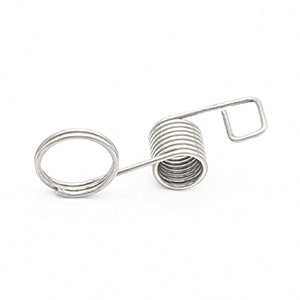Get unique, complex parts easily. No matter your requirements, Chaoyi Spring creates hard-to-produce coil springs and wire forms.
Let us help you create the custom wire form you need, from S-hooks and J-hooks to utility hooks and more.
We work closely with customers across a wide range of industries, helping them design and manufacture made-to-order parts.
Why choose Chaoyi Spring? We prioritize customer-focused collaboration, modern equipment and the latest technology to make your parts per print.
Find the information and guidance you need, from measuring a spring to learning about materials, placing an order and much more.
Understanding how to achieve maximum compression in a spring is essential for various applications, from mechanical engineering to everyday objects. This guide delves into the science behind spring compression, exploring


Understanding how to achieve maximum compression in a spring is essential for various applications, from mechanical engineering to everyday objects. This guide delves into the science behind spring compression, exploring key factors that influence this crucial characteristic. We'll cover the types of springs, the relationship between compression force and spring properties, and provide practical tips for maximizing compression in your specific application. Whether you're designing a new spring system or simply optimizing an existing one, this article will equip you with the knowledge and tools to reach peak performance.

Springs, those ubiquitous coiled wonders of engineering, are renowned for their ability to store and release mechanical energy through compression, extension, or torsion. This elasticity, a defining characteristic of spring behavior, allows them to absorb shocks, dampen vibrations, and provide a responsive force in countless applications.
At the core of spring compression lies the relationship between force and displacement. When you apply a force to a spring, it compresses, and the amount of compression is directly proportional to the applied force. This relationship is described by Hooke's Law, a fundamental principle of spring mechanics:
Force = Spring Constant (k) x Displacement (x)
The 'spring constant' (k) represents the stiffness of the spring; a higher spring constant indicates a stiffer spring that requires greater force for the same amount of compression. This relationship is crucial for understanding how to achieve maximum compression in your spring.
While Hooke's Law provides a fundamental framework, several factors can significantly influence spring compression. Understanding these nuances is critical for optimizing your spring design or application:
With a thorough understanding of the factors influencing spring compression, we can now explore practical strategies for maximizing this crucial characteristic:
While the above guidelines provide a solid foundation, some advanced considerations can further refine your spring compression optimization efforts:
Maximizing spring compression is a multifaceted challenge requiring a holistic understanding of the factors influencing spring performance. By carefully selecting materials, optimizing spring design, ensuring proper installation, and employing advanced techniques like preloading and stacking, you can unlock the full compression potential of your spring. Remember that the key to achieving optimal results lies in a thoughtful and informed approach, considering the specific needs and constraints of your application.
In conclusion, mastering the art of spring compression is essential for countless applications. This guide has explored the fundamental principles, key factors, and practical approaches to maximizing this crucial characteristic. By combining a solid understanding of spring mechanics with careful design, installation, and maintenance practices, you can unlock the full potential of your spring system and ensure its optimal performance. Whether you're designing a new system or optimizing an existing one, remember that maximizing spring compression involves a multifaceted approach, balancing the delicate interplay of material properties, geometry, and operating conditions.
Browse some of the custom wire forms and springs that we manufacture. Don’t see what you need? We specialize in made-to-order products that meet your application requirements.
Visit Our GalleryNeed a custom wire form or coil spring? We make it work. Fill out the contact form and a representative will respond within 1 business day. If you have a PDF or CAD file, you can submit to request a quote.